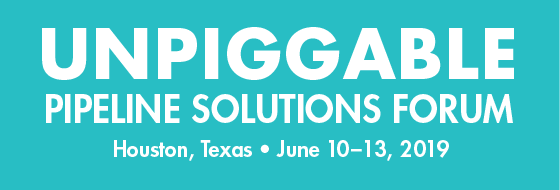
FEATURED PANEL SESSION ON
Transmission Pipeline Materials Verification
DAY 1 Wednesday, June 12 |
||
| 8.15 | Welcome and opening remarks | |
| 8.30 | 1 | Double jeopardy: small and multi-diameter – how to successfully deploy a miniaturized tool in an unpiggable 6-mile product pipeline |
| 9.00 | 2 | Development of a new bi-directional tool for expanded MFL and caliper inspection in previously unpiggable line segments |
| 9.30 | 3 | MAOP verification of gas transmission station piping Mark Ryan, Simon Lockyer-Bratton, Michael Rosenfeld, Kiefner & Associates Troy Rovella, PG&E Peter Veloo, Exponent |
| 10.00 | Coffee and refreshments | |
| 11.00 | 4 | Guidelines for Integrity Assessment of Difficult to Inspect Pipelines |
| 11.30 | 5 | Nondestructive evaluation of metal strength, toughness, and ductility through frictional sliding Soheil Saffari, Parth Patel, Ryan Lacy, S.D. Palkovic, and S.C. Bellemare, Massachusetts Materials Technologies |
| 12.00 | 6 | A turnkey project for a difficult-to-inspect pipeline |
| 12.30 | Lunch | |
| 2.00 | 7 | Pipers®; an inline screening tool for unpiggable pipelines Zachary Shand(1,2), Anouk van Pol(1), John van Pol(1) |
| 2.30 | 8 | Novel method for mapping pipeline restrictions using viscoelastic surveillance gel pigs |
| 3.00 | Coffee and refreshments | |
| 3.30 | 9 | Advantages of low-differential-pressure-seal ILI tools for bidirectional inspection of ‘unpiggable’ pipelines |
| 4.00 | 10 | Project GRAID (Gas Robotic Agile Inspection Device) |
| 4.30 | 11 | When pipeline modifications create challenging conditions Paul Westwood, Rosen Group |
| 5.00 | End of day, reception |
|
DAY 2 Thursday, June 13 |
||
| 8.30 | 12 | Enhanced subsea CT scanner for integrity visualization and assessment |
| 9.00 | 13 | Feasibility study for external ultrasonic inspection of an unpiggable subsea pipeline |
| 9.30 | 14 | An unconventional approach for riser inspections Tom Steinvoorte, John Parkinson, Christopher Woodley, Stefan Vages, Rosen Group |
| 10.00 | Coffee and refreshments | |
| 10.45 | 15 | Combination MFL-deformation inspections of small-diameter unpiggable pipelines |
| 11.15 | 16 | Inline inspection of liquid and gas pipelines with acoustic resonance technology (ART) |
| 11.45 | 17 | Robotic inspection of a 2.3-mile pipeline |
| 12.15 | Lunch | |
| 1.30 | FEATURED PANEL SESSION ON Panelists: |
|
| 2.10 | 18 | Bi-directional and pull-through inspection for challenging pipelines |
| 2.40 | 19 | Use of dry-pull testing to predict in-pipeline performance through various pipeline anomalies Dan Fletcher, Meghan Weir, Vincent Foong, Michael Hooper, Fiberbuilt |
| 3.10 | 20 | An approach to engineering critical assessment of assets that cannot be inline inspected by Peter Veloo, Exponent; Michael Rosenfeld, RSI Pipeline Solutions; and Troy Rovella, PG&E |
| 3.40 | Chairman’s summary & adjourn | |





